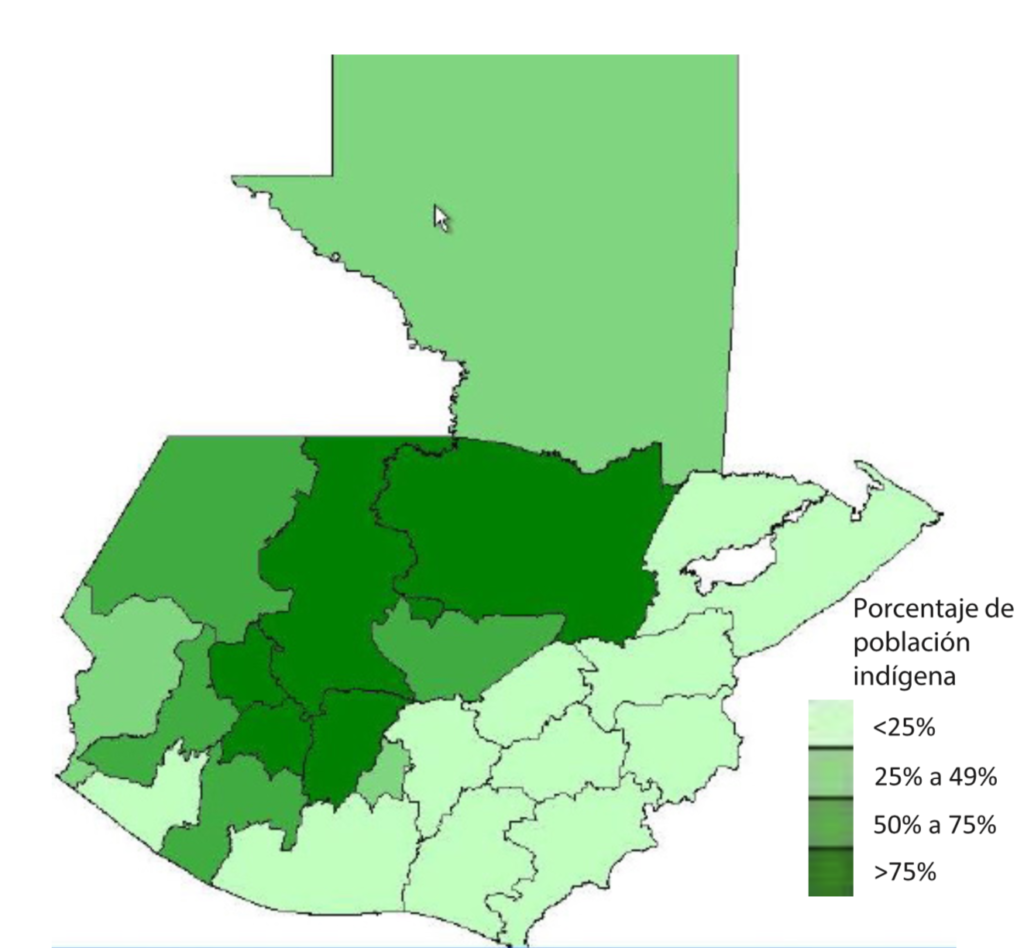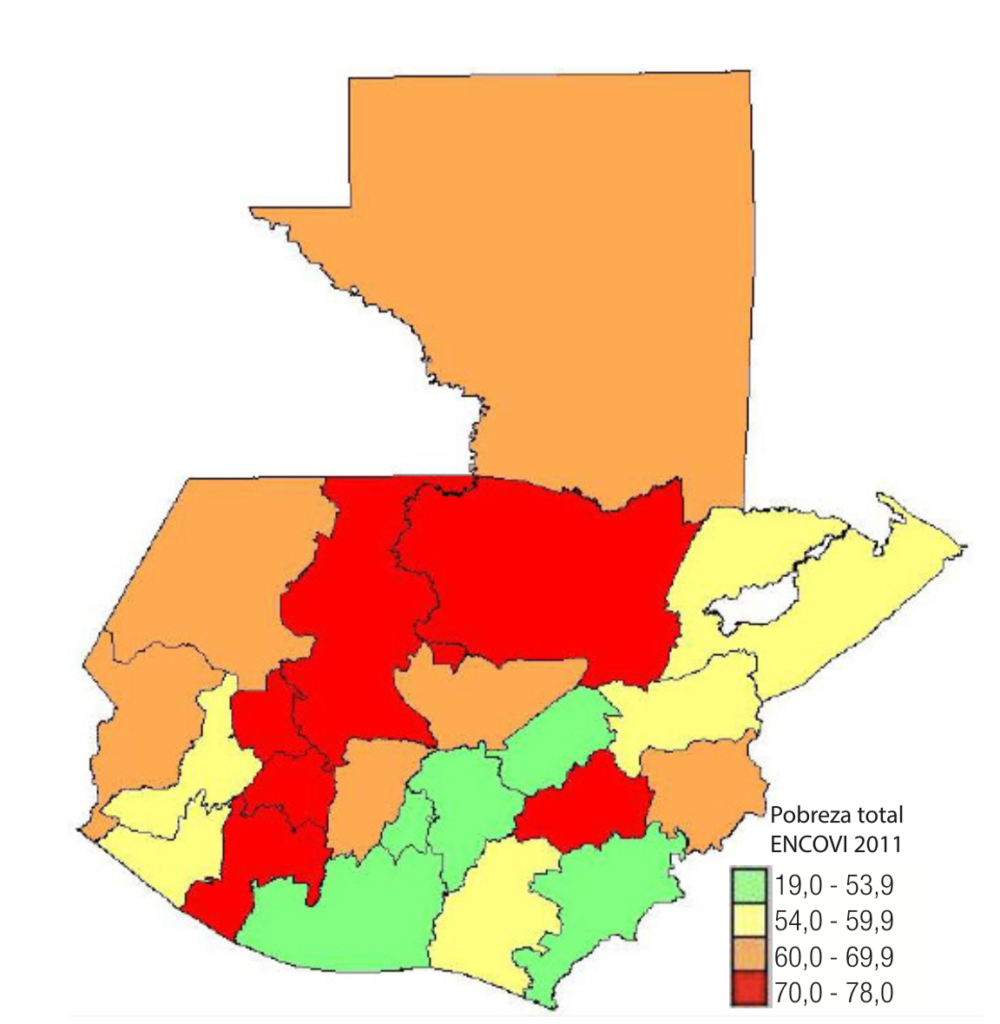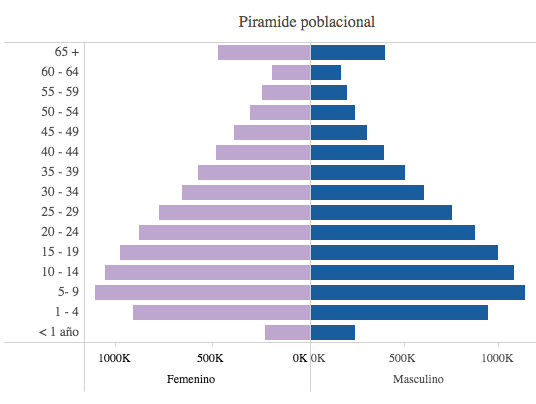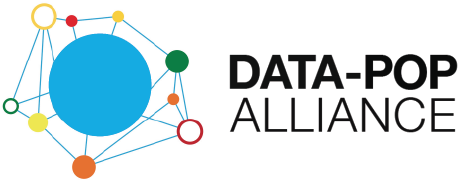GUATEMALA
Information last updated: 22 April, 2020
- Total population: 17 M
- Population +65 yo: 5%
- GDP Per Capita: 8,655 USD
- Informal employment: 73% (2017)
- First registered case: 13 March
- Hospital beds: 3.70 (per 1,000 people)
Sources: TheWorld Bank and WHO (Population over 65 years old, Informal employment, GDP-PPP, Hospital beds).
Status
National curfew (6pm-4am daily) effective through 2020.
Response set up and capacity
The Ministerio de Salud Pública y Asistencia Social (Ministry of Health and Social Welfare, MoH) is the national regulatory agency in charge of managing the strategy for the pandemic control, and collecting and reporting the status of known cases in the country.
The Government announced the construction of five temporary hospitals in the country dedicated to face the Covid-19 emergency. Total capacity in the country is expected to be less than one thousand patients. The MoH also authorized four private hospitals to perform Covid-19 tests, as an effort to decentralize testing of potential new cases. National public hospitals are also preparing areas for Covid-19 patients, however it has been previously reported that the number of patients (non-Covid-19) in the country already exceeds the total capacity of 7,500 beds to serve a population of about 18 million Guatemalans.
The MoH faces political and financial limitations that impede more effective management of a segmented and fragmented health system. The relatively low and unequal social and health indicators pose complex challenges that are hard to resolve with the system’s current structure and performance. The main challenge for the health system is to draft feasible policies and plans that can be implemented gradually and consider the real development potential, given the available resources, national context, and the country’s financial constraints. One of the major challenges for health service delivery is monolingualism, especially among Mayan women, who speak their Mayan mother tongue but not Spanish, the country’s official language.
Mitigating factors - What is being done?
The Guatemalan government has taken measures aimed at protecting the health and safety of all persons in Guatemala. The official measures implemented are:
- March 5 – Government declares state of calamity (Estado de calamidad) which allows the government to take exceptional measures to protect its national security (now extended until May 5). Under a state of calamity, the Guatemalan government can authorize specific actions, such as border closures and curfew. For updates related to the state of calamity, refer to the Guatemalan government social media.
- March 17 – Government closes its borders and barrs entry to most non-Guatemalans (with certain specific exceptions for health and security) — by its land, sea, and air borders. The policy on national border closings can be adjusted at any time by the government.
- March 21 – Under its declaration of a state of calamity, the Guatemalan government also instituted a nationwide curfew currently effective through April 12. The curfew lasts from 4:00 p.m. to 4:00 a.m. each day. Every individual in Guatemala — including foreign citizens — is required to remain inside their domicile during curfew hours (with exceptions for health, security, and some delivery services). The Guatemalan government may extend the deadline of the curfew at any time. Violators of the curfew restrictions risk arrest.
- April 4- The Congress, as per request of the executive power, approved an expansion of the budget for 11 billion Quetzales (GTQ) to deal with the emergency caused by the coronavirus pandemic. This includes 6 billion GTQ for a Family Bonus Fund assisting vulnerable families with up to one thousand GTQ per month, 2 billion GTQ for an Employment Protection Fund allowing 74 GTQ daily to be delivered to people who have been suspended from their work during the emergency, and 3 billion GTQ for a Credit Fund which will grant loans to SMEs of up to 250 thousand GTQ allosing for working capital with soft conditions to maintain productive capacity.
- April 6 – April 12 – as a social distancing measure during Holy Week, President Giammattei announced the closure of all beaches, lakes, rivers and other tourist sites in Guatemala through Sunday, April 12th. All tourist travel to these areas is prohibited. The sale, purchase, and public consumption of alcoholic beverages will also be prohibited from Monday, April 6 at 12:00 a.m. until Monday, April 13 at 6:00 a.m.
- April 20 – The president announced the 2 hours reduction of the national curfew starting now at 6pm and finishing at 4am. The period, however, was extended until Sunday April 26th. The decision to prohibit movement between departments or States of the country (taken on April 5th) was revoked.
In addition, these international organizations have taken the following measures to strengthen Guatemala’s capacity to respond to the pandemic:
- The Pan American Health Organization (PAHO) and the World Health Organization (WHO) donated personal protective equipment (PPE) kits, contact management kits and risk communication material for use in care centers for patients affected by COVID-19.
- The U.S. Department of State announced that it will provide funding to the International Atomic Energy Agency (IAEA) with equipment to help combat COVID-19. Guatemala will receive COVID-19 testing kits capable of processing at least 2,000 samples, as well as personal protective equipment (PPE) for medical professionals and training in how to use the testing kits. The kits are approved by the U.S. Food and Drug Administration for virus detection, and use nuclear-derived techniques to identify the COVID-19 virus.
- The Fundación para el Desarrollo en Guatemala (FUNDESA) donated 6,043 tests to detect Covid-19 to the government. The kits include tube reaction for identification and detection of Covid-19, extraction kits, swabs and reagents that will allow the National Health Laboratory to strengthen its capacity to perform tests on the population.
- The Secretaría Nacional de Ciencia y Tecnología (National Secretariat for Science and Technology , SENACYT) opened a call for impact projects that respond to the problems presented by COVID-19 in Guatemala.
Risks, vulnerabilities, obstacles
The Ministry of Public Health and Social Welfare covers 70% of the population and provides services at three different levels of care; however, access indicators are low, primarily for Guatemala’s indigenous population.
In general, geographical regions with higher percentages of indigenous and rural populations are associated with less access to health services, higher maternal mortality rates, higher poverty rates, and higher chronic-malnutrition rates.
Percentage of indigenous population (left) and total poverty (right)
The figure below shows the distribution of the population for the year 2020 based on the age range and categorized by gender. It can be observed that although the number of people (both male and female) decreases with age, the higher age range (65+) comprises a significant amount, over 1 million people total, which is considered the highest population at risk for COVID-19.
Population estimate for year 2020, Guatemala
Key resources
Contributor(s): Carlos Mazariegos, María Antonia Bravo.





